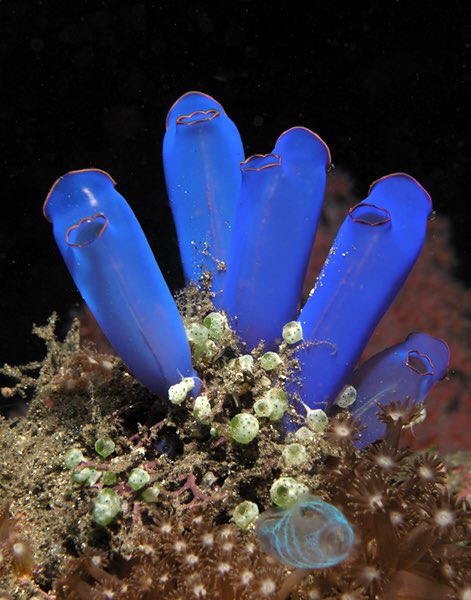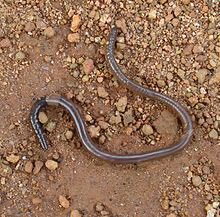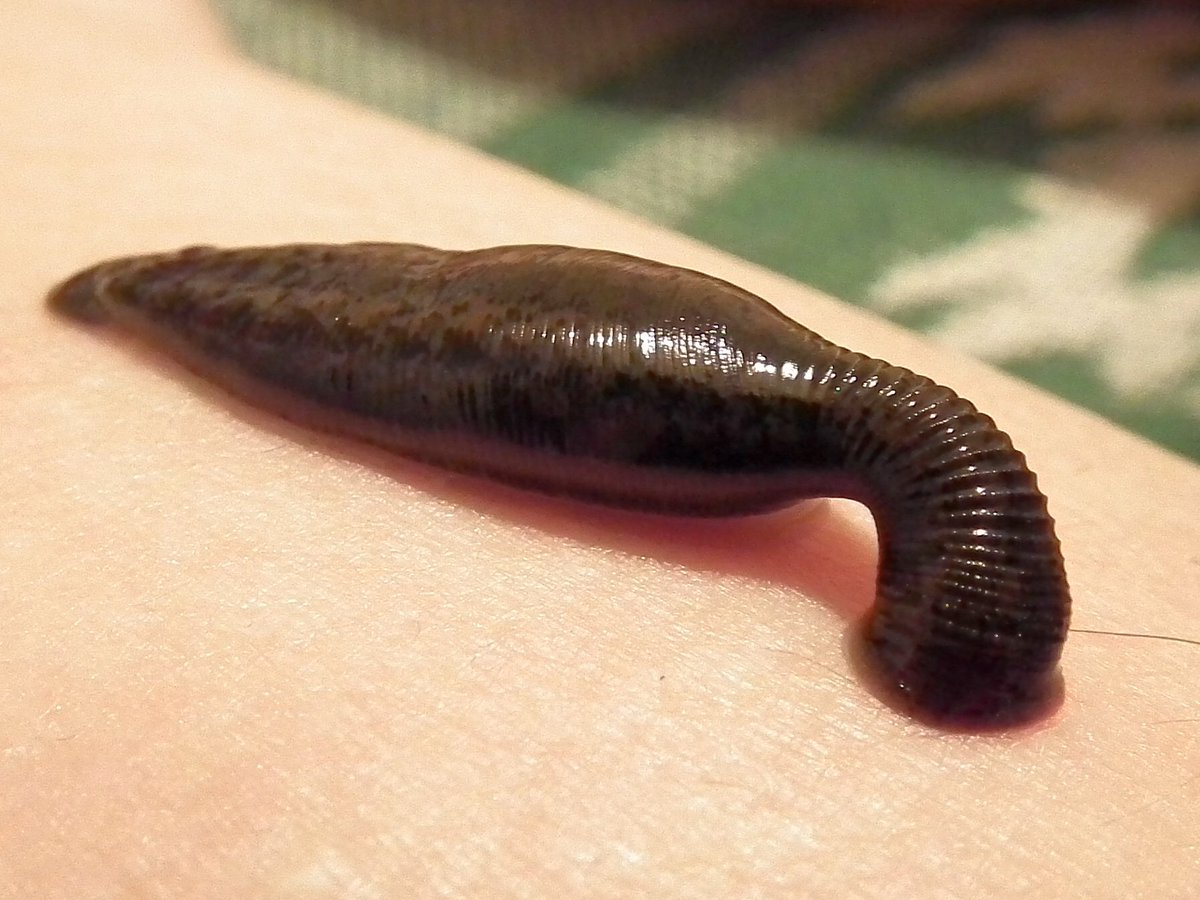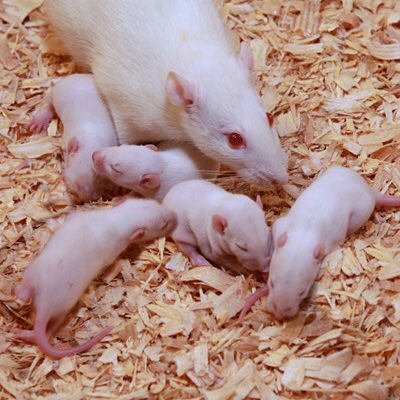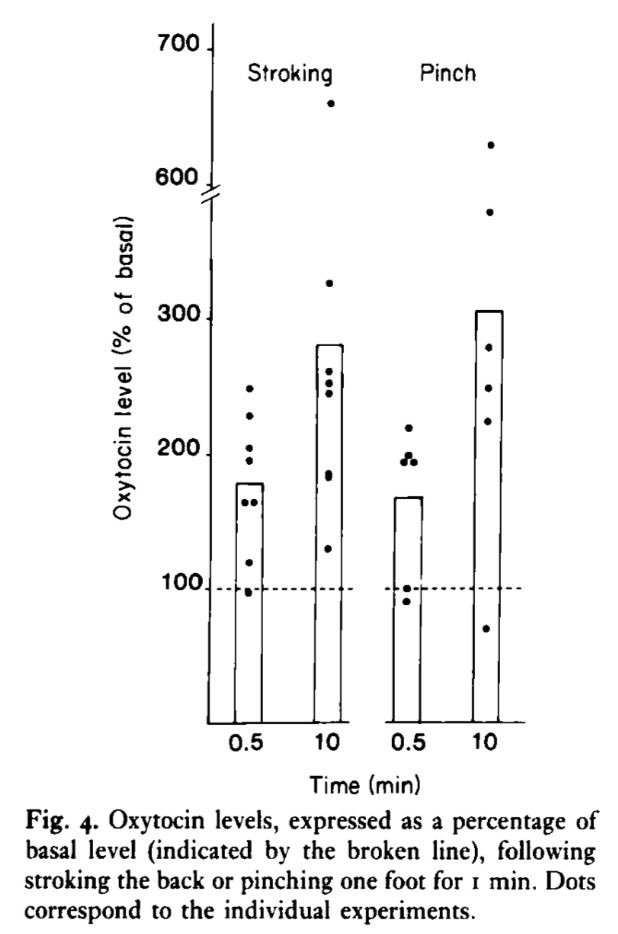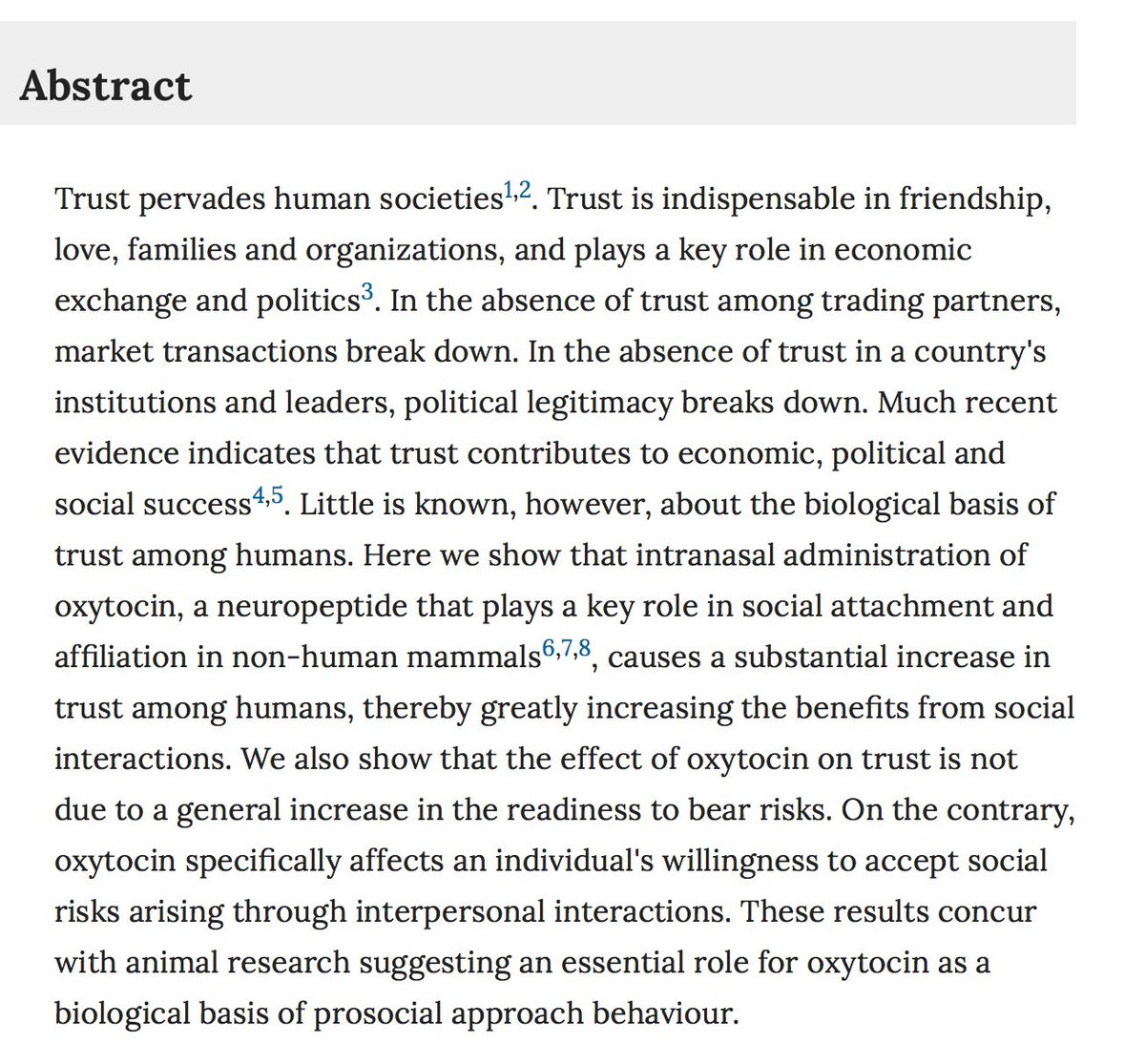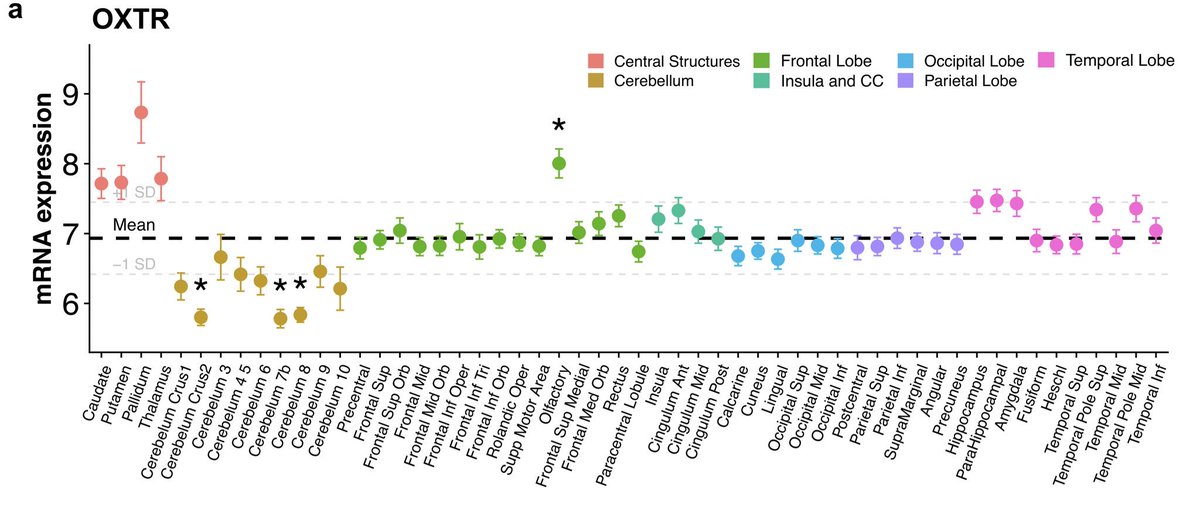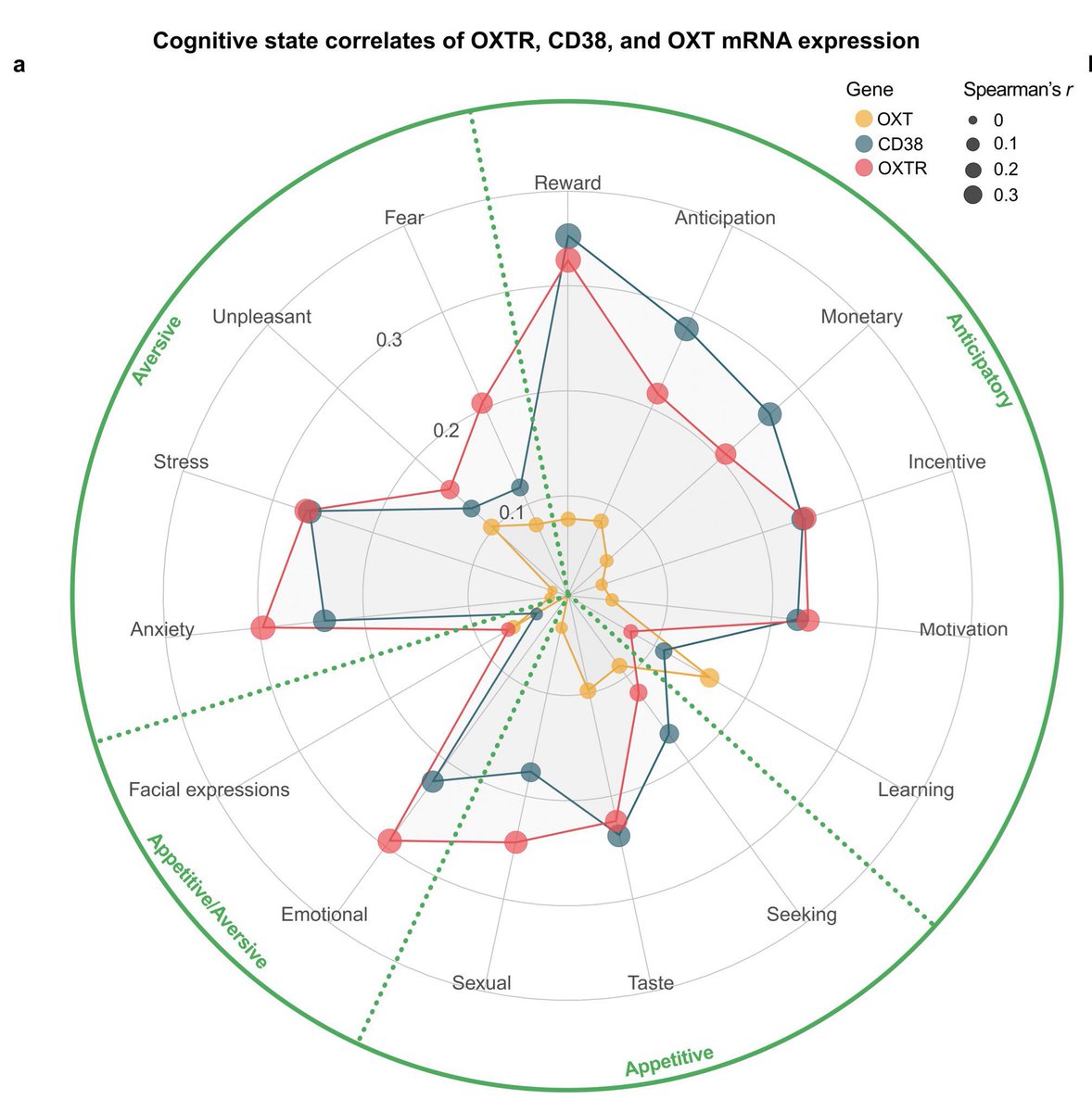It’s #ValentinesDay, which means there’s a lot of talk about oxytocin—the so-called “love hormone”  But despite the appeal of this label it’s a little misleading.
But despite the appeal of this label it’s a little misleading.
So let me walk you through this hormone’s history & why the actual role of oxytocin is MUCH more interesting...
 But despite the appeal of this label it’s a little misleading.
But despite the appeal of this label it’s a little misleading. So let me walk you through this hormone’s history & why the actual role of oxytocin is MUCH more interesting...
Oxytocin-like hormones are ~600 million years old, which is a LONG time before there was any evidence of “love”, or couple bonding. The sea sponge, considered the most ancient animal species, has no oxytocin-like signaling, suggesting it emerged in more modern species
The sea squirt, which is OLD but not as old as sea sponges, uses oxytocin-like signaling, but what’s its purpose if there’s there’s no sea squirt couple bonding?
Well, it turns out oxytocin-like signaling regulates tissue contraction for salt regulation https://www.ncbi.nlm.nih.gov/pubmed/18583415
Well, it turns out oxytocin-like signaling regulates tissue contraction for salt regulation https://www.ncbi.nlm.nih.gov/pubmed/18583415
Oxytocin-like signaling’s effect on tissue contraction is also seen in earthworms https://www.ncbi.nlm.nih.gov/pubmed/8900077 and leeches https://www.ncbi.nlm.nih.gov/pubmed/10451417
Another role of oxytocin that’s been observed in primitive animals: learning. Roundworms without oxytocin signaling fail to demonstrate typical food-related learning behaviors http://science.sciencemag.org/content/338/6106/543
Fast-forward a couple of hundred million years and the effects of oxytocin-like signaling on tissue contraction remains in humans. It’s involved in birth, breastfeeding, sex, digestion, and cardiovascular regulation, among other functions.
Let’s return to this “love hormone” idea in the context of tissue contraction. It plays a role in childbirth via uterine tissue contraction but mammals can still give birth to healthy young without oxytocin signaling https://www.ncbi.nlm.nih.gov/pmc/articles/PMC38121/
Here’s my heavily pregnant wife a year ago to the day. Under normal conditions, males and females have similar levels of circulating oxytocin. But about a week later during the birth of our daughter, her oxytocin levels skyrocketed
While oxytocin is involved but not necessary for childbirth, it’s CRUCIAL to nurse offspring. Mothers without oxytocin signaling produce milk, but they can’t eject it https://www.ncbi.nlm.nih.gov/pmc/articles/PMC38121
Ok, so it’s involved in birth and crucial for nursing so where did this “hug hormone” idea originate? Probably this 1988 rat study that reported increased blood concentrations of oxytocin after “gentle stroking” https://www.ncbi.nlm.nih.gov/pubmed/3223304
Do a twitter search on “oxytocin” and you’ll see lots of tweets like, “Hugging your partner for [insert random number] seconds increases oxytocin”.
This idea started with a rat study (n=8) that found the same results with PINCHING
This idea started with a rat study (n=8) that found the same results with PINCHING
Another origin of this “love hormone” ideas comes from animal research in prairie voles, who are socially monogamous. Oxytocin administration to the brain accelerates pair bonding while blocking oxytocin receptors restrict bonding
But what about humans? Well, in 2005 a study was published in Nature that concluded intranasal oxytocin increases trust in humans https://www.nature.com/articles/nature03701 We’ll return to this idea later...
This study was the catalyst for several other studies that reported similar results that oxytocin increases prosocial behaviors and the ability to understand what others are thinking or feeling, otherwise known as “theory of mind”
All these findings contributed to a ton of hype, with hyperbolic news stories https://io9.gizmodo.com/10-reasons-why-oxytocin-is-the-most-amazing-molecule-in-5925206 and even more hyperbolic claims (based on VERY preliminary work) of what oxytocin can do. I doubt what they sell here contains *any* oxytocin, so don’t buy this, obviously...
Then came the studies that revealed the dark side of oxytocin, like that it increases schadenfreude https://www.ncbi.nlm.nih.gov/pubmed/19640508/ and reduces cooperation with outgroup members https://www.ncbi.nlm.nih.gov/pmc/articles/PMC3029708/?wptouch_preview_theme=enabled For more, check out this excellent @edyong209 article https://www.sciencedirect.com/science/article/pii/S0262407912603777?via%3Dihub
And remember that ‘trust’ study from 2005? This finding hasn’t replicated, with 7 studies cumulatively suggesting that oxytocin doesn’t increase trust https://www.ncbi.nlm.nih.gov/pubmed/26581735/ Other studies have also failed to replicate oxytocin’s effects in different social domains
So what does the oxytocin system actually do? The best that we can say right now is that it can influence our behavior and mental states (both positive AND negative), but only under some circumstances.
So based on this research and work by other teams, it seems that the oxytocin system is involved in several physiological AND psychological functions, which happens to include social behavior
But how can one hormone do so many things, often simultaneously? Regarding physiology: Oxytocin receptors are sensitive to oxytocin’s release schedule. For instance, milk let-down occurs in response to strong pulses whereas salt levels respond to steady low-level release
When it comes to behavior, oxytocin is released two ways in the brain: direct transport from oxytocin-producing cells to SPECIFIC regions and broad diffusion throughout the brain for action on its receptors, located here https://www.nature.com/articles/s41467-019-08503-8
And the location of these receptors are associated with mental states can be broadly categorized as anticipatory, appetitive, and aversive https://www.nature.com/articles/s41467-019-08503-8 In fact, there seems to be more evidence oxytocin system supports metabolism than social behavior...
Rather than evolving new sets of signaling systems, evolution has figured out a way to repurpose one system for several purposes via the location of oxytocin receptors in the brain and by making peripheral receptors sensitive to specific release schedules.
If biological signaling systems were like radio transmission waves, this would be like adopting morse code and adjusting the locations of receiver antennas sensitive to this frequency instead of creating a new transmission frequency 
Happy Valentine’s Day

Happy Valentine’s Day

This thread totally counts as an #AcademicValentine if your Valentine cares about accurate psychoneuroendocrinology reporting.
THERE’S NOTHING SEXIER
THERE’S NOTHING SEXIER

Here's a preprint covering these ideas https://osf.io/j7tnf/ Instead of being a "love" hormone, a "pro-social" hormone, or even a "social" hormone, we think oxytocin is more accurately described as an allostatic hormone that helps maintain stability in changing environments
Just posted a blog post version of this thread https://www.dsquintana.blog/oxytocin-isnt-the-love-hormone-but-the-reality-is-much-more-fascinating/

 Read on Twitter
Read on Twitter
